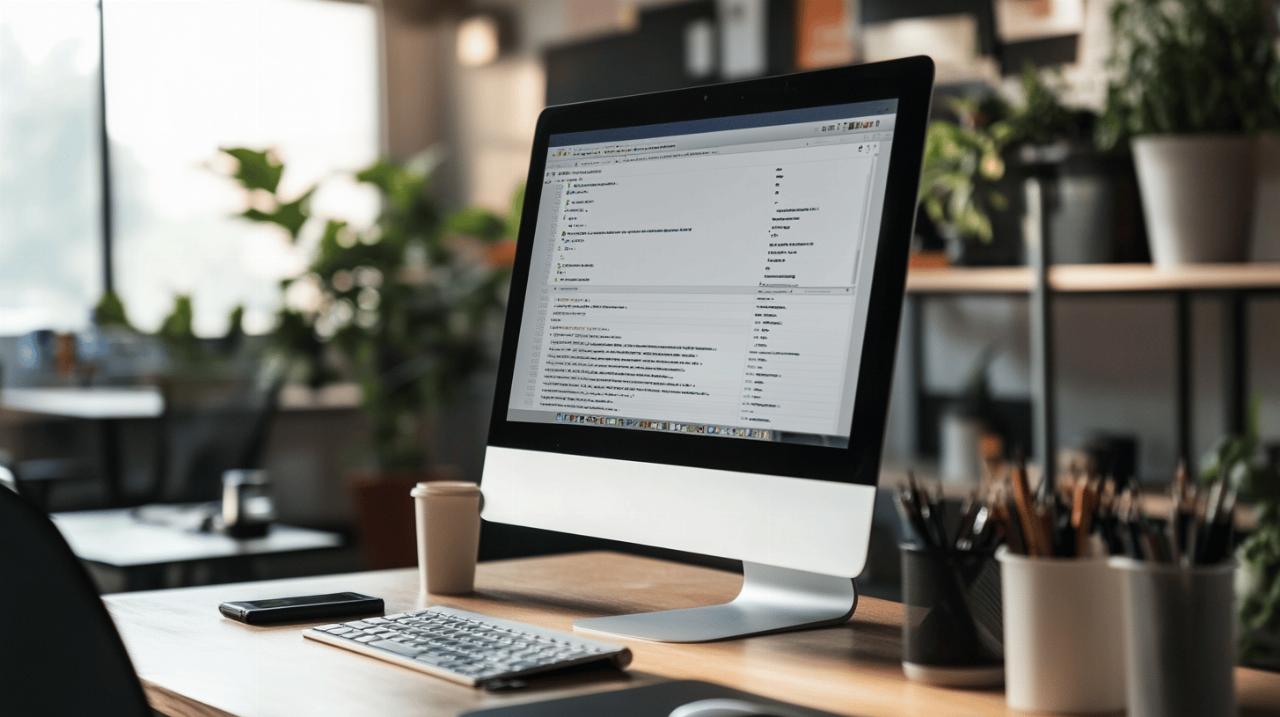Comment Mettre un Texte en Italique avec WordPress: Mastering Typography for Better Blog Engagement
Typography plays a crucial role in how readers perceive and interact with your WordPress content. The subtle art of using italics can transform ordinary text into something more engaging and dynamic, drawing attention to key phrases and creating a visual rhythm that keeps readers scrolling. Whether you're emphasising a foreign phrase, highlighting a book title, or simply adding nuance to your writing, mastering text formatting in WordPress is an essential skill for any blogger who wants to stand out in the crowded digital landscape.
Getting started: why italics matter for your wordpress content
The Role of Emphasis in Digital Typography
Digital typography serves as the foundation for how your message is communicated to your audience. When you alter font styles and add visual emphasis through techniques like italicising, you guide readers through your content with intentional cues. The way text appears on screen influences not only readability but also the professional design of your entire website. Typography creates an unspoken dialogue between writer and reader, establishing tone and hierarchy without uttering a single word. In the world of WordPress themes and block editor systems, understanding how to manipulate text appearance becomes a powerful tool for bloggers who want their content to resonate. Good typography makes a website feel more professional and easier to read, transforming a simple blog post into an experience that visitors remember long after they've navigated away.
When to Use Italics: Best Practices for Bloggers
Knowing when to apply italic formatting requires a delicate balance between emphasis and restraint. Writers typically employ italics for foreign words, titles of books and films, and to add subtle stress to specific phrases that carry particular weight in their arguments. Overusing this text decoration can dilute its impact and make your content appear cluttered, so strategic application remains paramount. Consider the rhythm of your sentences and how visual breaks through font customisation can enhance rather than distract from your message. The characters per line and font spacing work together with your chosen emphasis techniques to create an overall reading experience that feels natural and inviting.
Quick and simple methods: the gutenberg editor approach
Visual formatting: using the toolbar buttons
The WordPress block editor, commonly known as Gutenberg, offers an intuitive interface for text formatting that requires no technical expertise. When you highlight the text you wish to italicise, a formatting toolbar appears above the block, presenting various options for modifying your content. Among these options sits a small button marked with the letter 'I', which instantly transforms your selected words into slanted text with a single click. This approach allows you to alter font styles for an entire block of text or just specific words, depending on what you've highlighted. Should the italic button not appear immediately in your toolbar, look for three dots typically labelled as more options, which reveal additional formatting choices including the text transformation you seek. The typography section in the block settings sidebar provides even more comprehensive control over how your text appears, allowing you to change font size and adjust other appearance settings that complement your italic formatting.
Keyboard shortcuts: speeding up your workflow
For those who prefer keeping their hands on the keyboard rather than reaching for the mouse, WordPress offers convenient shortcuts that dramatically speed up the formatting process. Simply highlight your desired text and press Ctrl plus I on Windows machines or Cmd plus I on Mac computers to instantly apply italic styling. This time-saving technique becomes second nature after a few uses, allowing you to maintain your writing flow without breaking concentration to navigate through menus. These keyboard combinations work seamlessly within the block editor environment, making text formatting feel like a natural extension of your writing process rather than an interruption.
Advanced techniques: html and css solutions
Understanding the Difference Between and Tags
 For bloggers who enjoy working directly with code, switching to the code editor view in Gutenberg opens up a world of precise control over text formatting. You can access this view by clicking the three dots in the upper right corner of the editor interface. Once inside, you'll encounter two HTML tags that both create italic text but serve distinct purposes. The tag stands for emphasis and carries semantic meaning, signalling to screen readers and search engines that the enclosed text holds particular importance. The tag, conversely, applies italic styling purely for visual presentation without implying any special significance. When you wrap your text in either em tags or i tags, the visual result appears identical to readers, yet the underlying code communicates different information to assistive technologies and web crawlers that interpret your content.
For bloggers who enjoy working directly with code, switching to the code editor view in Gutenberg opens up a world of precise control over text formatting. You can access this view by clicking the three dots in the upper right corner of the editor interface. Once inside, you'll encounter two HTML tags that both create italic text but serve distinct purposes. The tag stands for emphasis and carries semantic meaning, signalling to screen readers and search engines that the enclosed text holds particular importance. The tag, conversely, applies italic styling purely for visual presentation without implying any special significance. When you wrap your text in either em tags or i tags, the visual result appears identical to readers, yet the underlying code communicates different information to assistive technologies and web crawlers that interpret your content.
Site-wide styling: customising with additional css
When you want to apply consistent italic formatting to specific elements throughout your entire WordPress site, CSS provides the most efficient solution. This method requires navigating to the WordPress Customiser through the Appearance menu, then selecting the Additional CSS option. Here you can add custom styling rules that affect multiple pages simultaneously. For instance, if you wished to italicise all blockquotes across your site, you would enter a simple rule specifying the blockquote element and setting its font style property to italic. This approach ensures visual consistency and saves countless hours compared to manually formatting each instance. Working with CSS for site-wide changes ideally should be done within a child theme to prevent your modifications from being overwritten when the main theme updates. While typography plugins like Styleguide or WP Google Fonts offer convenient interfaces for font customisation with options for changing font weights and accessing extensive font libraries, basic formatting tasks rarely justify adding another plugin to your WordPress installation.
Common Mistakes to Avoid and Typography Tips
Avoiding overuse: maintaining visual clarity
The temptation to liberally sprinkle italic text throughout your content can undermine the very emphasis you're trying to create. When everything receives special treatment, nothing stands out, and your carefully crafted message becomes lost in a sea of slanted letters. Maintaining visual clarity requires discipline and a keen eye for where emphasis truly serves the reader's understanding. Consider the overall balance of your text appearance and how different formatting choices interact with elements like bold text, underline, and strikethrough options. Using only two or three fonts throughout your site creates a more cohesive and professional design, and the same principle applies to text decoration choices. The goal is to enhance readability rather than create visual noise that distracts from your core message.
Accessibility considerations for screen readers
Creating content that works for all readers, including those using assistive technologies, should remain a priority for every WordPress blogger. Screen readers interpret your formatting choices differently than sighted users experience them visually. When you choose between using the em tag for semantic emphasis versus the i tag for purely visual italics, you're making a decision that affects how accessible your content becomes. The em tag signals to screen readers that the enclosed text should receive vocal emphasis, providing context that helps visually impaired users understand the nuances of your writing. Font size considerations also play into accessibility, as text that appears too small or uses insufficient contrast can exclude readers with visual impairments. The typography section in your theme settings often provides options for adjusting these elements, ensuring your beautifully formatted content remains inclusive. By thoughtfully applying italic text and other font styles with accessibility in mind, you create a welcoming experience for every visitor to your WordPress blog, regardless of how they access your content.










